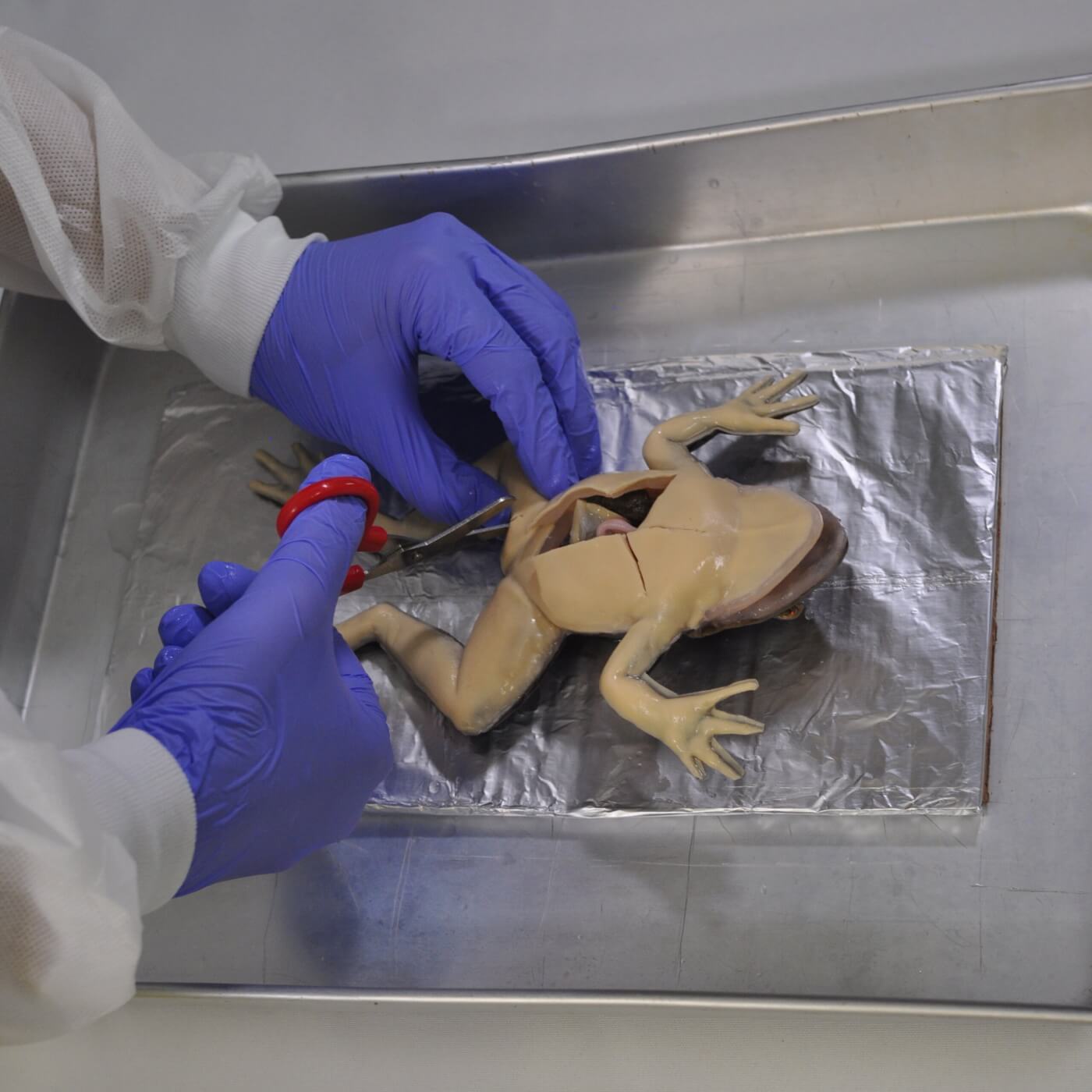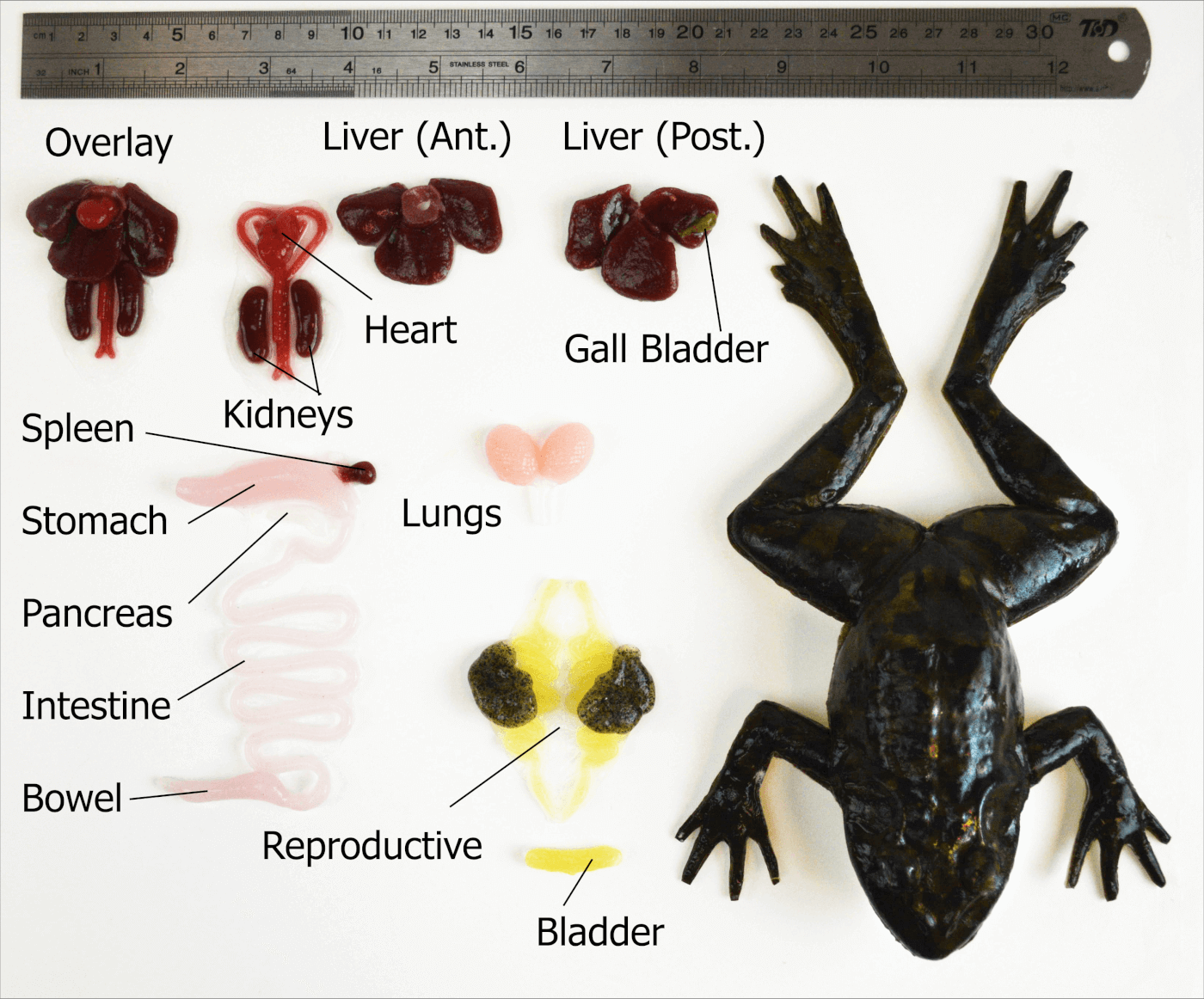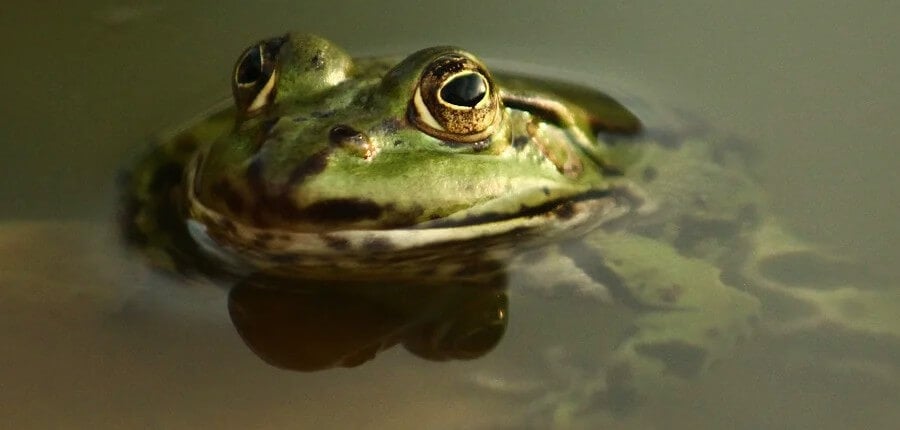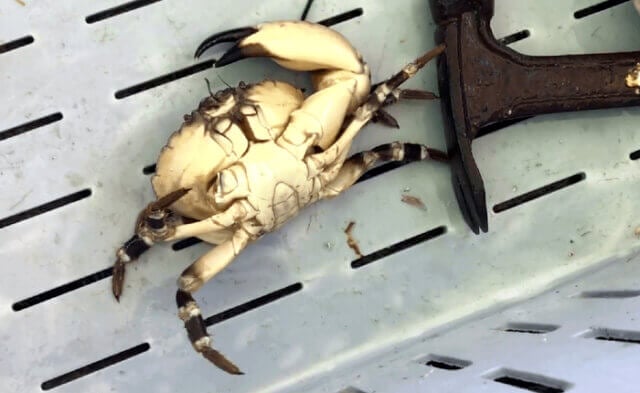While growing up, I heard older kids discussing how disgusting frog dissection in seventh-grade science class was. When my time came, I was full of dread. I was a vegetarian at the time, raised by early PETA supporters. I considered animals to be friends, not something to be cut up for a grade on a report card. After I entered the science classroom, I got a headache from the strong stench of chemicals. On the table in front of me was a frog, just like ones I would sometimes watch hop around in my backyard. The frogs in the classroom had been killed just so students could dissect them. Everything about the situation felt wrong. I cried at the sight. It traumatized me, and I wished very deeply that there were another option that would have prevented the death of frogs and my trauma.
Thankfully, nowadays TeachKind, PETA’s humane education program, is helping frogs and students alike. It can help students looking to replace the archaic practice of animal dissection with an educational but cruelty-free alternative. Each year, roughly 3 million frogs are killed for dissection in the K–12 and collegiate school systems. PETA’s partnership with SynDaver—a company that creates hyperrealistic models of human and animal cadavers—has changed classroom learning. It also represents the future of science.

The SynFrog is animal-friendly and safe for those who use it. While frog cadavers are preserved in potentially hazardous chemicals, the anatomically accurate SynFrog is chemical-free.
Hundreds of students have used the SynFrog, and their reviews have been extremely positive. At J.W. Mitchell High School in New Port Richey, Florida, students and teachers alike have had success with using this cruelty-free alternative to animal dissection.
Principal Jessica Schultz said, “So kids are involved. They are in it. They are finger deep in frog guts, but it’s all synthetic, so the smell isn’t there. The stigma isn’t there. They are not opting out. Every kid is engaged, and we have students from all academic levels in the classes that we chose and the teachers that we have them with, and they are just all in on this.”
Student Maddie Foster added, “And real frogs, they don’t actually have to be living and then die for us to do dissections on them, so I prefer this for sure.”

I wish SynFrog had been around when I was in seventh grade. Now, students have the opportunity to learn without having to go through the traumatic process of dissecting animals.





